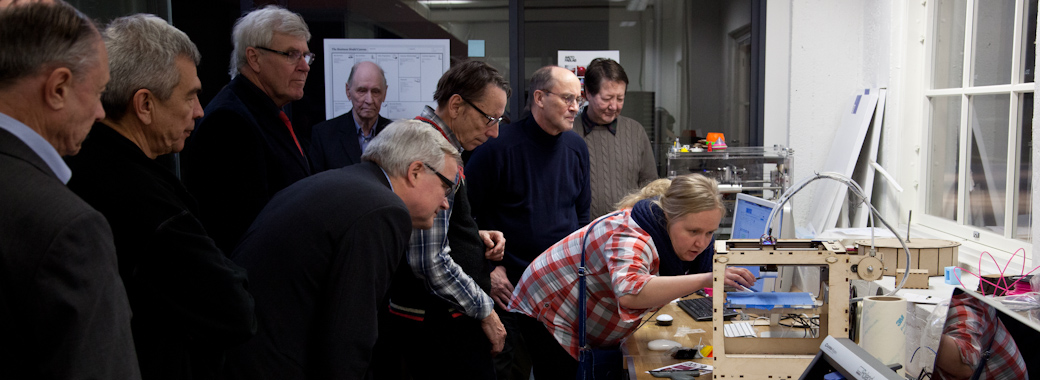A group of students from the Scenography programme of Aalto University School of Arts, Design and Architecture visited FabLab. Short test-projects gave the students ideas how the FabLab facilities could be utilized in their studies and work in the future.
After getting to know the possibilities the different machines in FabLab offer in terms of creating, the students took a day to plan a test-run project. Later the same week, the group came back to get some hands-on experience with for example 3D printing.

Bea Tornberg oversees the printing of her statue.
Bea Tornberg tried out 3D printing by creating a small animal statue.
“I’d imagine this would be a good way to create very small, detailed items that are very difficult and time consuming to fabricate in a workshop by hand,” Tornberg said.
For bigger objects Tornberg still prefers good old-school handwork. She feels it is in some cases quicker than 3D printing, which takes a while for larger objects.

Tornberg’s 3D printed rabbit-camel hybrid.
At the next table Aapeli Savola was attempting to replicate foliage by etching copper. First Savola printed the design on a transparency paper, which was then placed on a protected copper before projecting UV-light on the plate. After treating the material with the light, the copper plate was dipped into developer fluid to remove the protective layer of the copper from areas affected by the UV-light. With the protective layer gone, dipping the copper to the etcher solution results in the unprotected parts to corrode entirely, leaving only the foliage pattern behind.
The process turned out to be a bit tricky and required testing on different batches of material.
“This definitely requires more testing. The first try did not bring the result I was after,” Savola said while studying the result of his first attempt on the foliage.

Creating replica of foliage requires some testing.
Like any other Aalto student, everyone from this group is welcome to continue their projects at the FabLab outside courses. After all, FabLab is the place for testing, failing and trying again, with staff that will work with you to get your project just right.
Savola’s copper plates were left to corrode in the etcher for overnight. Photo of the results will be release at FabLab’s Facebook page once the fluid has gotten its job done.
If you’d like to bring the students from your course to visit FabLab or do some course projects in our facilities using our machines, don’t hesitate to contact the FabLab staff, Anu Määttä and Ali Neissi, to schedule a time for the group’s visit: fablab@aalto.fi.












